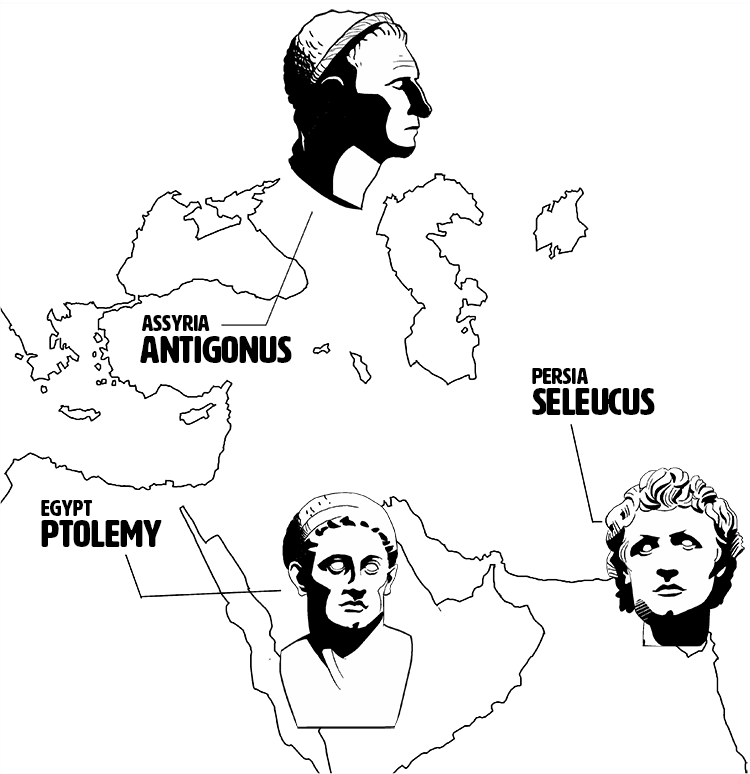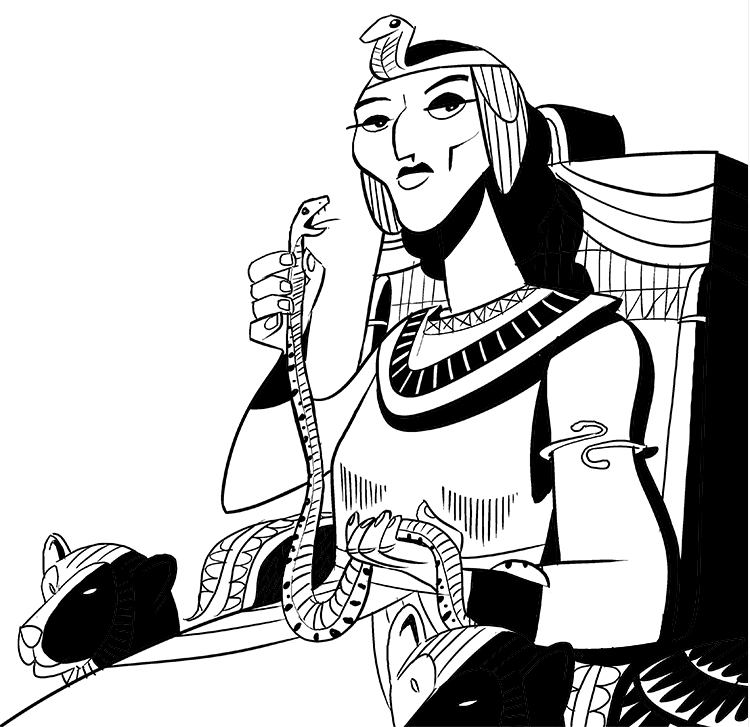In just 18 short years, Alexander the Great went from being the ambitious son of a powerful Greek king to leader of one of the largest empires ever.
One of his first conquests was Egypt, and after securing it, he commissioned a new capital to be built — Alexandria. But Alexander did not live very long, and when he died, Egypt was once again an independent nation. But its new leaders were Greek, giving rise to the Ptolemaic period, also known as Hellenistic Egypt.

Alexander’s Empire Divided
Alexander’s Empire was divided and fought over by his generals after his death.
The Founding of the Ptolemaic Dynasty
Alexander the Great established his massive empire in just 18 years. This meant there was little time to establish the political infrastructure needed to maintain such a large empire. So, the kingdom was divided among his closest generals and advisors upon his death.
Egypt was given to a man named Ptolemy. Upon assuming the throne, he married an Egyptian queen to solidify his position. He then defended Egypt against invasions led by the other general of Alexander’s armies. Turns out these guys weren’t that friendly after all.
This success firmly established a new dynasty in Ancient Egypt, known as the Ptolemaic Dynasty, or sometimes the New Kingdom.
Ptolemaic kings ruled jointly with their wives, who were also often their sisters. All the kings in the Ptolemaic dynasty took the name Ptolemy. And all their wives were either Berenice, Cleopatra, or Arsinoë.

Serapis
Ptolemy worked hard to establish a religious significance to his rule. He created a new god — Serapis — who was actually a mixture of several Greek and Egyptian gods.
Egypt Under the Ptolemaic Dynasty
Since Ptolemy and his family were not Egyptian, they had some work to do once they’d claimed control of Egypt to secure their position.
Ptolemy started by taking the title of pharaoh. This long-standing moniker of Egyptian rulers symbolized the godlike status of Egyptian kings.
Furthermore, Ptolemy worked hard to establish a religious significance to his rule. He created a new god — Serapis — who was actually a mixture of several Greek and Egyptian gods. This was designed to win the support of both groups.
Many of these temples were built around the city of Alexandria, which was the capital of Egypt during the Ptolemaic period.
Besides being the political and religious center of Ptolemaic Egypt, Alexandria was also an important trade port. Its strategic location between Europe and Egypt, it served as a connection between these two worlds.
This made Alexandria a truly global city, one of the first of its kind. And the wealth it generated helped the Ptolemaic kings hold onto the Egyptian throne.
In addition, Ptolemy also promoted the cult of Alexander, who had declared himself to be the son of the god Zeus-Ammon. This was yet another deity derived by mixing Greek and Egyptian gods.
Ptolemy and his successors also built countless temples to both Egyptian gods and past pharaohs.
This was all done in an attempt to further entrench the Ptolemaic claim to the Egyptian throne.
In the end, this strategy worked. The Egyptians accepted Ptolemy, first because he defended them from invaders after Alexander’s death, but also because he showed a genuine interest in respecting and maintaining Egypt’s longstanding cultures and traditions.

The Great Library of Alexandria
The library housed many of the most revered texts of the time, and scholars from across the world traveled to study there. This turned Alexandria into a hotspot for the exchange of ideas and information, and it also made it one of the world’s first truly multicultural cities.
The Great Library of Alexandria
Perhaps one of the biggest contributions that Ptolemy made to Egypt, and that Egypt made to the world, was the construction of the Great Library of Alexandria.
The Greeks had always been leaders in learning, and Ptolemy wanted to establish this tradition in his new kingdom. The library no longer stands today, but accounts suggest it was a massive structure. But beyond its architectural significance, the library proved to play an important role in the growth and development of both Egyptian and world culture.
It housed many of the most revered texts of the time, and scholars from across the world traveled to study there. This turned Alexandria into a hotspot for the exchange of ideas and information, and it also made it one of the world’s first truly multicultural cities.
Together, the library and the port helped make Alexandria the center of the ancient world, and it was this wealth and power that attracted the Romans as their civilization expanded beyond the Italian peninsula.

Cleopatra
The final Ptolemaic ruler, Cleopatra VII, committed suicide with no heirs. Egypt was then annexed into the Roman empire with little resistance.
The Fall of the Ptolemaic Dynasty
After several hundred years of peace and prosperity, the Ptolemaic dynasty eventually began to crumble. Family members who all felt they had a claim to the throne fought and weakened the monarchy.
Also, the nearby Seleucid and Macedonian empires were expanding and knocking at Egypt’s doors.
In an effort to save themselves, Ptolemaic rulers looked to the Romans for help. Over time, Roman influence of Egyptian politics eroded its independence.
Eventually, the final Ptolemaic ruler, Cleopatra VII, committed suicide with no heirs. Egypt was then annexed into the Roman empire with little resistance.
This marked the end of an independent Egypt, for it would remain under Roman control until Muslim conquest in the 7th century AD. But Egypt’s final period as its own nation had a profound impact on ancient history and on the development of world civilization.
Written by Matthew Jones
Illustrated by Pablo Velarde Diaz-Pache
